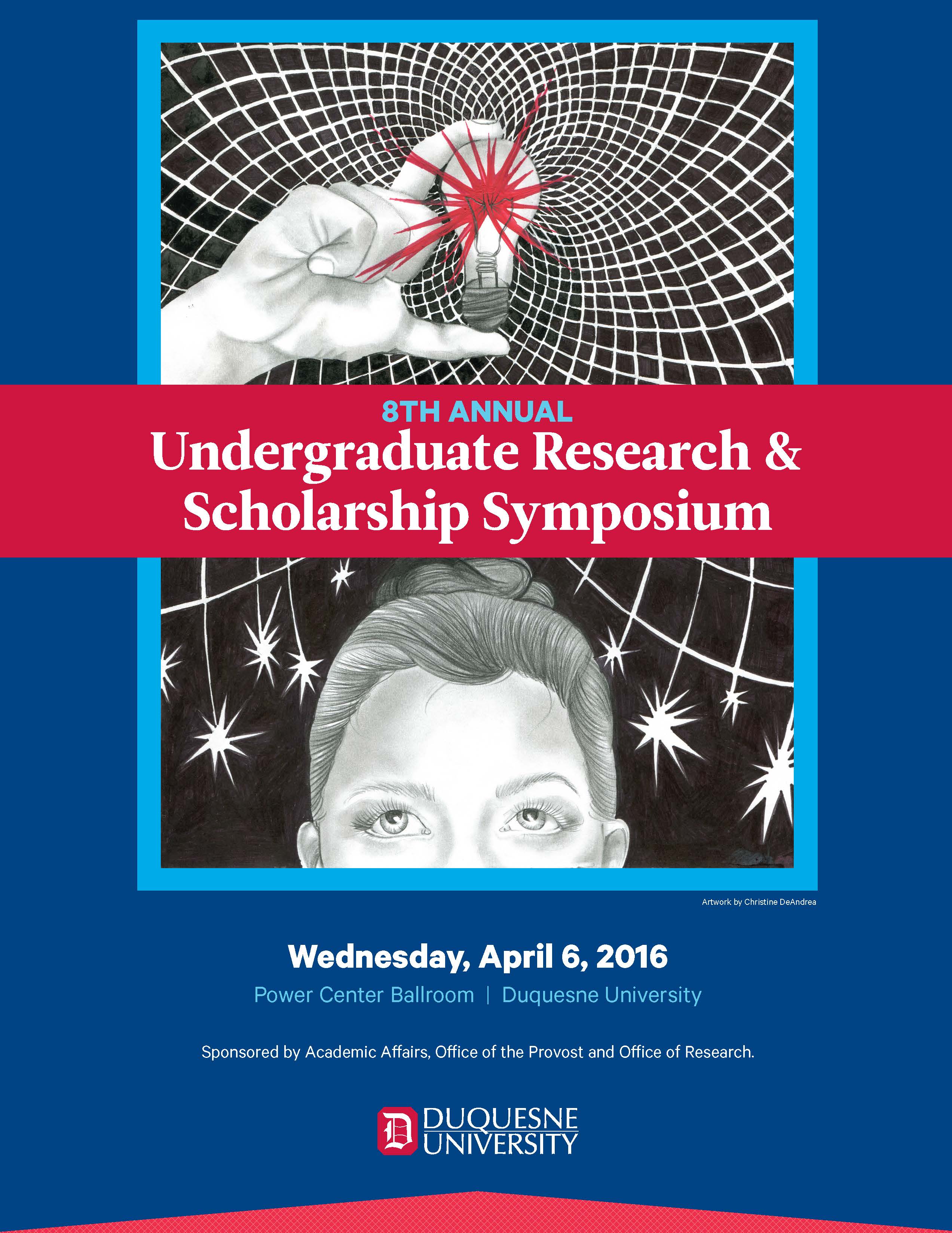Presenter Information
Danielle Bautista, David W. Seybert
Abstract
Macromolecular crowding refers to the intrinsic occurrence of high concentrations of macromolecules found within cells, which may alter biomolecular properties of other macromolecules. Simulating these environments in vitro should enable a more accurate understanding of these modifications. We have employed in vitro studies to specifically examine the effects of macromolecular crowding on biological redox reactions. The iron-sulfur protein ferredoxin (Fdx) and the FAD-containing flavoprotein ferredoxin-NADP+ reductase (FNR), from Spinacea oleracea, were utilized as a model electron transfer system. Utilizing NADPH as a reductant, the Fdx-FNR complex reduces mammalian cytochrome c as a surrogate electron acceptor. Reduction of the heme moiety of cytochrome c is monitored at 550nm. We have focused our attention primarily on bovine serum albumin (BSA) as a model macromolecular crowding agent at concentrations up to 20%. Under these conditions, the rate of cytochrome c reduction displays hyperbolic kinetics with respect to Fdx concentration. Initial experiments utilizing 10% BSA resulted in a 70% reduction in the electron transfer rate, whereas lower BSA concentrations showed evidence of stimulatory effects. These results suggest crowding effects on reduction kinetics in this system may be nonlinear. We will report the Fdx concentration dependence of cytochrome c reduction rates as a function of BSA concentration. In related experiments, we have also examined viscosity effects with this system to determine the effects of changes in diffusion rates on the kinetics of electron transfer.
School
Bayer School of Natural and Environmental Sciences
Advisor
David W. Seybert, Ph.D.
Submission Type
Paper
Publication Date
2016-04-06
Included in
Effects of Macromolecular Crowding on Ferredoxin and Ferredoxin-NADP+ Reductase Kinetics
Macromolecular crowding refers to the intrinsic occurrence of high concentrations of macromolecules found within cells, which may alter biomolecular properties of other macromolecules. Simulating these environments in vitro should enable a more accurate understanding of these modifications. We have employed in vitro studies to specifically examine the effects of macromolecular crowding on biological redox reactions. The iron-sulfur protein ferredoxin (Fdx) and the FAD-containing flavoprotein ferredoxin-NADP+ reductase (FNR), from Spinacea oleracea, were utilized as a model electron transfer system. Utilizing NADPH as a reductant, the Fdx-FNR complex reduces mammalian cytochrome c as a surrogate electron acceptor. Reduction of the heme moiety of cytochrome c is monitored at 550nm. We have focused our attention primarily on bovine serum albumin (BSA) as a model macromolecular crowding agent at concentrations up to 20%. Under these conditions, the rate of cytochrome c reduction displays hyperbolic kinetics with respect to Fdx concentration. Initial experiments utilizing 10% BSA resulted in a 70% reduction in the electron transfer rate, whereas lower BSA concentrations showed evidence of stimulatory effects. These results suggest crowding effects on reduction kinetics in this system may be nonlinear. We will report the Fdx concentration dependence of cytochrome c reduction rates as a function of BSA concentration. In related experiments, we have also examined viscosity effects with this system to determine the effects of changes in diffusion rates on the kinetics of electron transfer.

